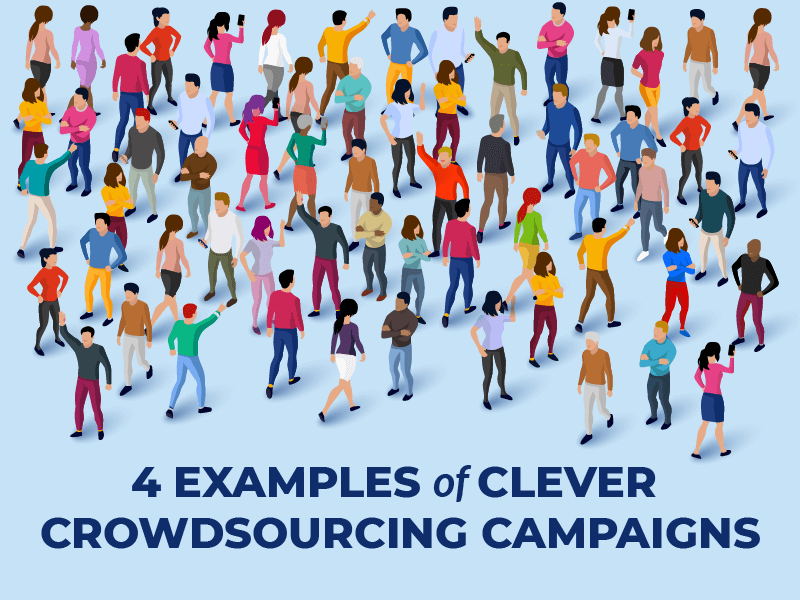For-profit and nonprofit businesses ultimately have the same objective: make money. Whether you’re selling a tangible product or service or you’re trying to attract donors for your cause, the bottom line is you need revenue. And that requires an effective and memorable marketing strategy.
You’ve probably heard a million times that you have to make your marketing stand out; there isn’t a one-size-fits-all marketing strategy. Company size, industry, product/service complexity, and budget all play a critical role in determining the perfect marketing mix for your organization.
Another major factor to consider is if you are in the for-profit or nonprofit business. Even though everyone is trying to make a dollar at the end of the day, the way you go about it isn’t going to be the same. Here are four differences between for-profit and nonprofit marketing to keep in mind:
How Revenue Is Generated
Even though both for-profits and nonprofits ultimately want to generate revenue, the way that occurs is a bit different. For-profits make money because consumers like you and me go to the store or online and purchase a product or service. Nonprofits make money through donations. This difference significantly affects how these companies are marketed. On one hand, you’re buying something; and on the other, you’re giving.
One could argue that for-profits have it easier in the sales and marketing realm because consumers are physically getting something in return for their hard-earned money. Could that possibly stem off from the increasingly brand-conscious and “desire to have more” society we live in today? It certainly doesn’t hurt.
Nonprofits on the other hand, seem to have a tougher battle to fight. They have to cut through the clutter of this “me, me, me” mindset and make people realize the difference they could make through a simple donation. Showing that every dollar counts and can help someone going through a tough situation may not be as easy of a sell, but it’s certainly worth the extra effort.
Means of Attracting Customers/Donors
The first step in any marketing strategy is attracting potential customers by generating interest in what your company offers. With for-profit companies, this strategy typically takes the approach of educating consumers about what the product or service does and how you will benefit from it. In order to be successful, it’s important to spend time determining your target market and what media they will be most responsive to. Figuring out where your audience gets their information from is essential to making your message heard, whether it’s social media, referrals, search engines, or traditional media.
Nonprofits attract customers by building awareness of an issue or cause, typically by appealing to consumers’ emotions. They do use some educational elements in their marketing by sharing statistics of how many people are affected by a certain disease or circumstance, but the primary focus is to pull at our heartstrings.
For me, every time I see a commercial for the ASPCA on TV, I can’t help but get emotional. Seeing defenseless animals in such horrifying conditions makes me want to run to the SPCA and bring a dog home (to my “no pets allowed” apartment) or pick up the phone and donate. And that’s exactly the point. Nonprofits don’t hide these painful circumstances because they want donors to know that their contribution can make a difference, and it’s obviously a great way to get support.
Providing Customer Satisfaction
For-profits provide a tangible element that nonprofits cannot because when you support a nonprofit, your donation is going to help someone else. You don’t have anything physical to claim; it’s all about that warm, fuzzy feeling we get from helping someone in need. So the way these types of companies deliver customer satisfaction through their marketing is ultimately much different.
For-profits use marketing to build up hype around a product or service so people are excited to buy it. They create an experience around the purchase by educating the benefits of buying that particular item. Keeping this focus on the customer helps create a satisfying purchasing experience from start to finish, and if done right, will keep them coming back to make purchases in the future.
Nonprofits focus their marketing on how satisfying it feels to give back and help others. Since the donor isn’t the physical beneficiary, the marketing strategy is all the more valuable. By creating feelings of fulfillment and pulling at our emotions, you can’t help but realize how lucky you are to have so much in your life. Realizing how fortunate you are in comparison to many others builds that desire to give back and support a good cause.
Brand-Buyer Relationship
Since consumers interact with thousands of marketing messages a day, many of which go ignored, an important factor to consider is how personal you should get. Is it really that important to build a relationship with your customers?
That was kind of a leading question. Relationship-building is essential to a successful marketing strategy, but the lengths that companies go to develop this is a bit different. For-profits do place an emphasis on establishing a relationship with customers, but it isn’t always to the extent that nonprofits do. They have the ability to partially ride on the satisfaction that a purchase provides; that a task can be accomplished easier or a need can been filled.
Think about how you feel when you buy a new outfit or electronic. Sure, a positive customer experience is important; you want to feel valued because you’re spending hard-earned money. However, in some cases it would be a stretch to call that a relationship. If you’re buying something you really need or have had your eye on for a while, then how the company tries to create a personal experience may not be quite as important. You’ve already made up your mind.
Nonprofits thrive on this element because they want donors to feel a connection to the cause they are supporting. Since they aren’t the beneficiaries, it’s important to build and nurture that relationship. This helps establish trust that you are a reliable organization, while also helping your chances of getting future donations.
A way that nonprofits often try to establish and maintain a relationship with their donors is through a newsletter. This is a great way to show tangible examples of how giving impacts others through images, personal stories, and plans for future initiatives. Being able to see exactly where your money is going helps that relationship flourish.
Even though companies are all trying to be financially successful, you can’t apply a single marketing strategy to them all. There are so many nuances that differentiate brands from one another, and one of the biggest is certainly whether they are for-profits or not. For-profits thrive on the ability to provide a tangible reward to customers and nonprofits succeed by bringing out the humanitarian in all of us. If you are just starting up a business or you’ve been operating for years, it’s important to keep these differences in mind so you position yourself appropriately in the market.
Are there blurred lines between some of these points? Absolutely. We see tons of for-profit companies trying to appeal to a consumer’s emotions through humor or tragedy. But identifying your company as a for-profit or nonprofit organization is an essential step in helping define your marketing strategy. It helps you establish goals, target markets, ways to satisfy customers, and hopefully make them come back time and time again.




